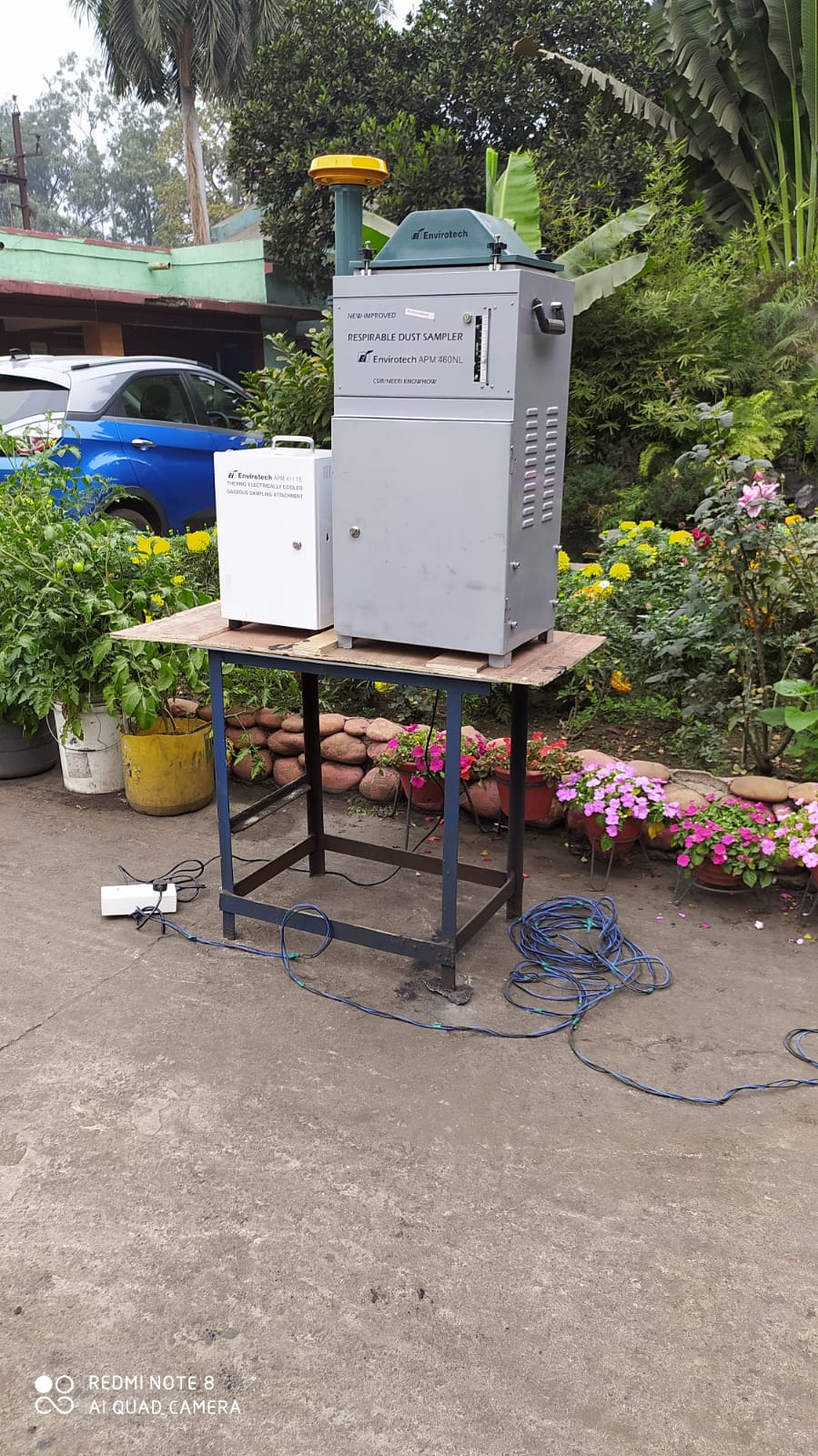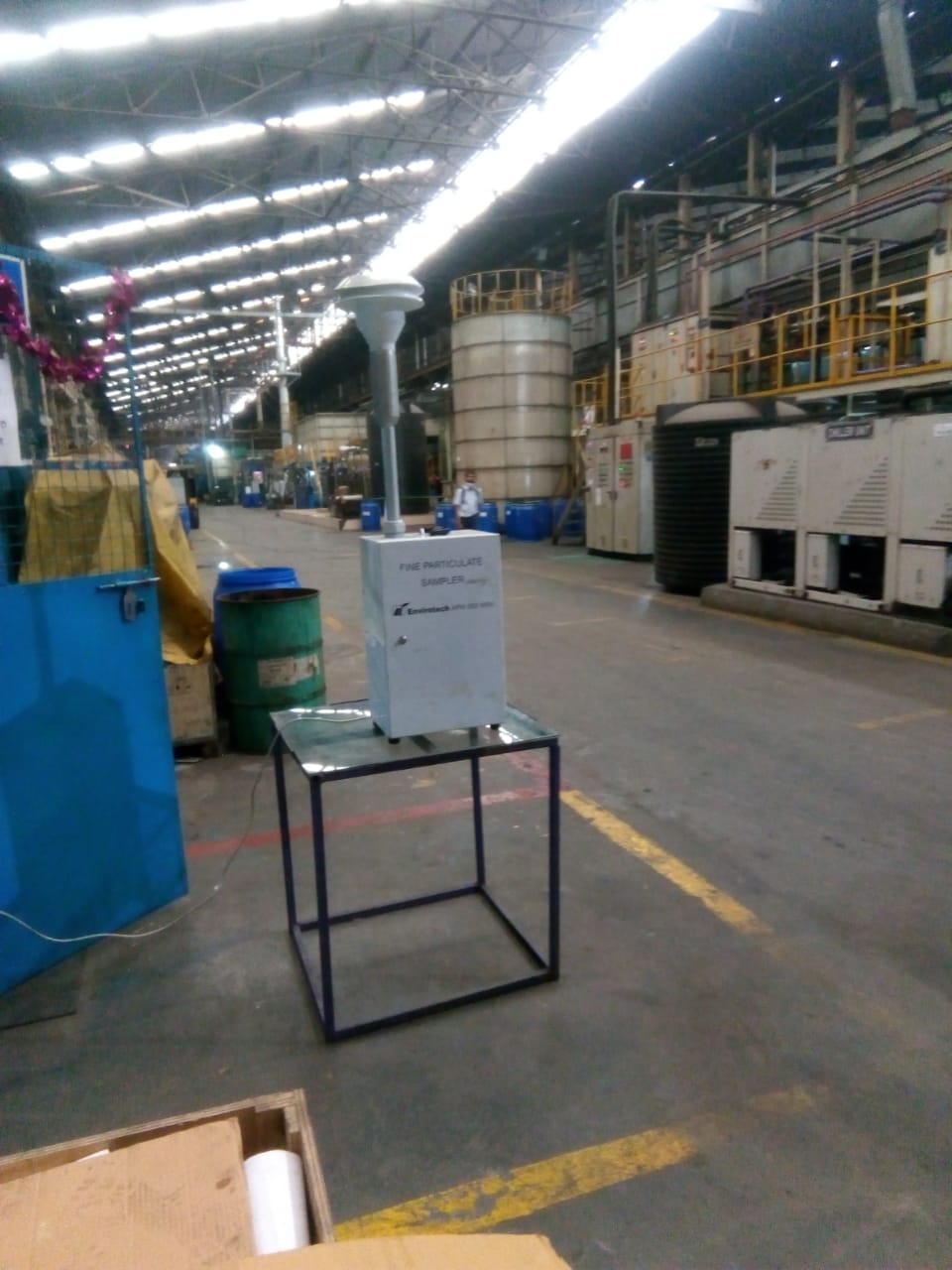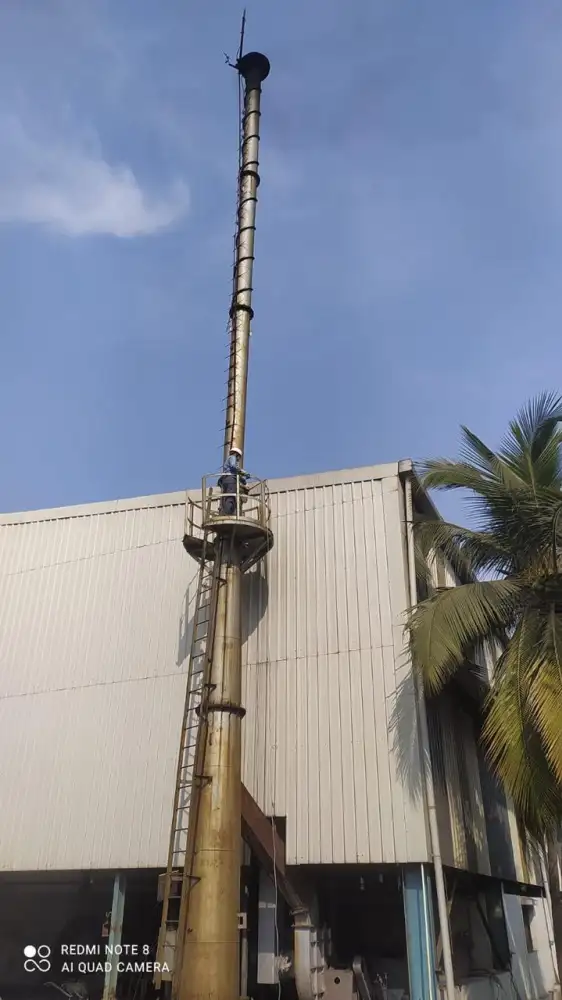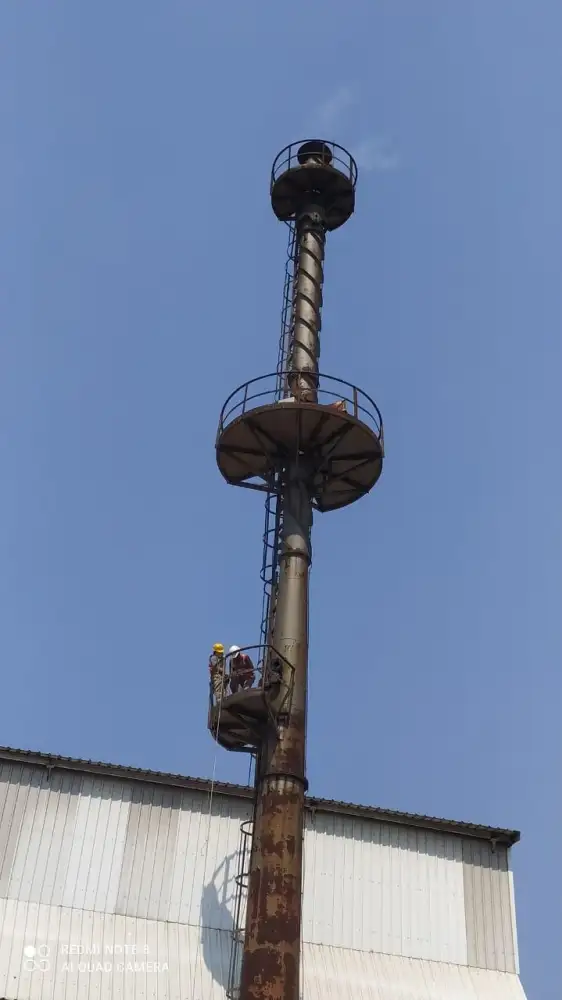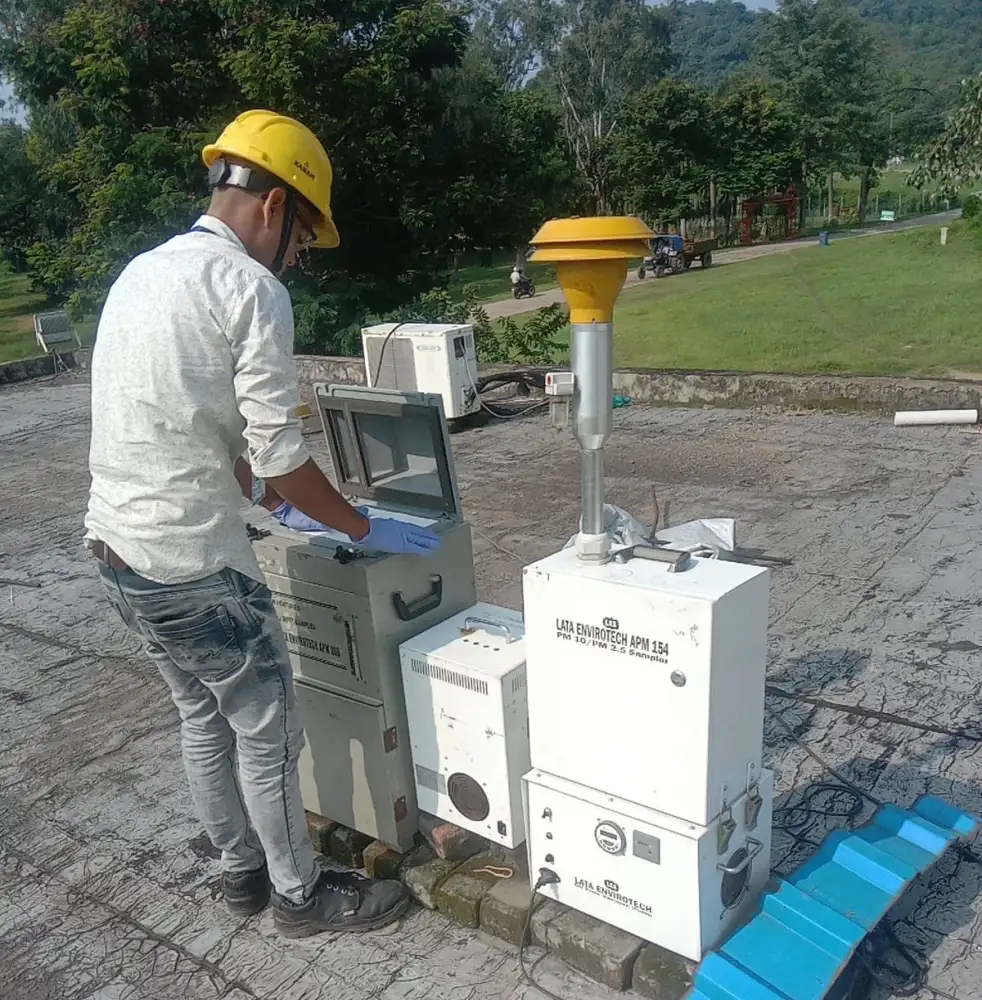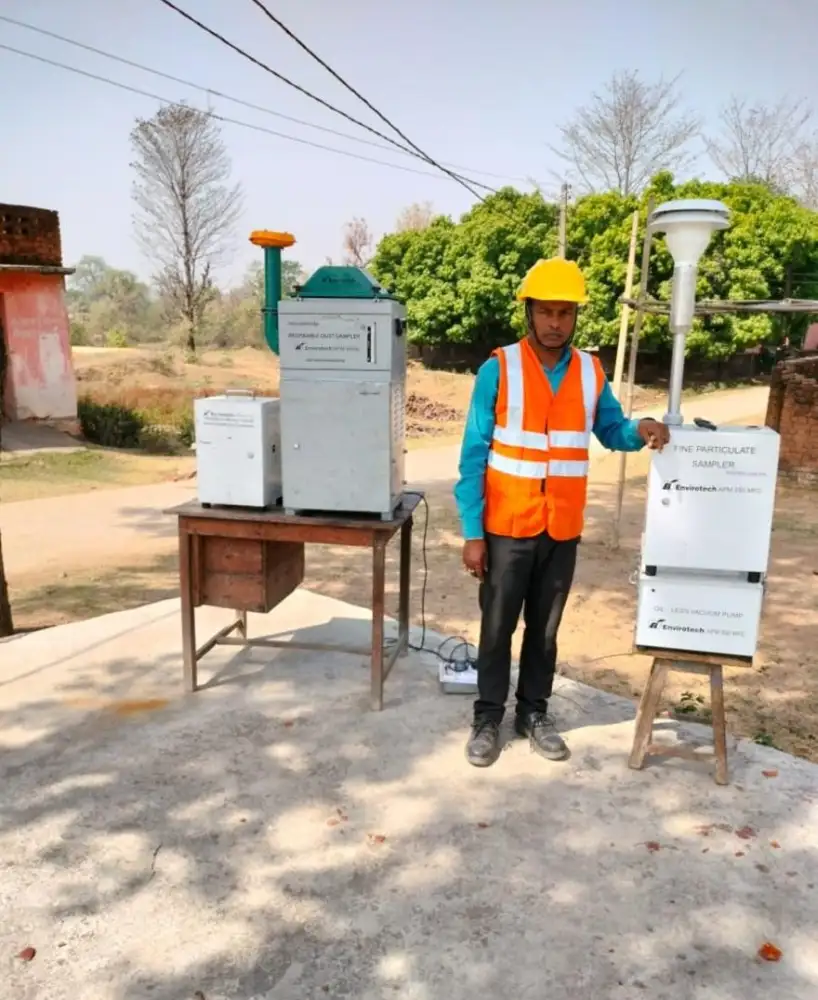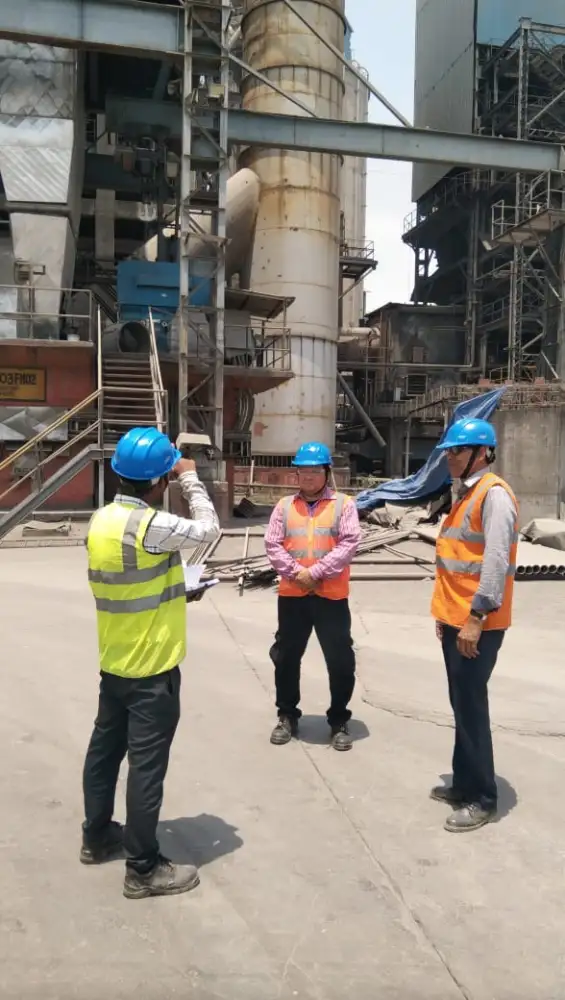AIR SAMPLING AND MONITORING
Air Sampling and Monitoring is essential to protect Air Quality, Human Health and overall Environment of the Earth.
Air Pollution from transportation, power generation, industries and domestic sources can cause a variety of health problems, including cancer and respiratory and cardiac diseases. Chemicals and particles released by these activities change the composition of the Ambient Air, which can also affect animals and plants life. Sampling and Monitoring must be undertaken to ensure that the Environment is protected.
ELES AIR SAMPLING AND MONITORING SERVICES
We offer a comprehensive range of Air Monitoring services. These includes:
- Discontinuous Ambient Air Sampling
- Passive Sampling
- Deposition Monitoring
- Fine Particulate Monitoring (PM-10, PM-2.5)
- High Volume Sampling (e.g. Dust)
- Gaseous Sampling (e.g. SO2, NOX, CO, NH3, O3 )
- Continuous Ambient Monitoring
- Online Ambient Air Monitoring Station for continuous monitoring of environment (e.g. PM10, PM2.5, SO2, NO2, NH3, O3, Temperature, Humidity, Wind Direction, Wind Speed etc.)
- Source (Stack Emission) Monitoring
- Particulate Matter (e.g. SPM)
- Acid Fumes
- Metals (including- Mercury)
- SO2, NOX, CO, CO2, O2
AMBIENT AIR MONITORING
Transportation, Power Generation, Industrial and Domestic Sources have all led to pollution and changes in the Ambient Air’s Composition. Air pollution can seriously impact human health, causing respiratory problems, cardiac disease and cancer.
AMBIENT AIR MONITORING SERVICES
Ambient air monitoring assesses pollutant levels by measuring the concentration of key pollutants in the surrounding outdoor air.
Our comprehensive range of Ambient Air Quality Monitoring Services includes:
- Passive Monitoring
- Passive sampling is performed by means of diffusive sampling. The results provide a general indication of average pollution concentrations over a period ranging from one week to one month. This methodology is not reliant on electricity and is ideal for baseline measurements or where no permanent site has been established
- Measured pollutants include SO2, NOx, CO, O3, HF, H2S, NH3 and Cl2.
- Dust Deposition Monitoring
- Dust deposition sampling is performed to determine dust deposition rates at multiple points on the fence line of a facility. The results of which can provide a general indication of average dust concentrations over a period of one month
- Additional analysis of heavy metals can be undertaken on the samples.
- Total Suspended Particulate Matter (TSPM) and Fine Particulate Matter (PM-10 and PM-2.5)
- TSPM refers to airborne particles or aerosols that are less than 100 micrometres in size, usually sampled using a high-volume sampler. PM-10 and PM-2.5 refers to the fine inhalable fractions of suspended dust particles that are regulated due to potential health impacts.
- Active Sampling by sorbent tube
- Sorbent tube sampling is performed by drawing ambient air through a sampling tube at pre-determined flow rate over a specified duration by means of a calibrated sampling pump.
INDOOR AIR QUALITY MONITORING
Indoor Air Quality Monitoring protects indoor environments from contamination and reduce workers’ exposure.
Traditionally considered risk-free, environments such as commercial and residential buildings, offices, and terminals, are now being acknowledged as potential settings for contamination. Physical, chemical and microbiological pollution has been linked to certain diseases when concentrated in the indoor environment. Environmental and health requirements are becoming more stringent to ensure comfort, health and sanitation.
INDOOR AIR QUALITY SERVICES
Accurate and up-to-date information will protect humans and confirm compliance with relevant regulations.
Core services include:
- Assessment of facilities and air handling systems
- Studies on microbiological, chemical and physical conditions
- Diagnosis of “Sick Building Syndrome”
STACK EMISSION MONITORING
Measure emission levels from stacks and ducts with stack emission monitoring.
Pollutants emitted into the Atmosphere from Stacks and Ducts may include Particulate Matter, Gases, Fumes and Vapours. The type and amount of pollutants must be quantified to:
- Evaluate compliance with existing or proposed emission regulations
- Test the efficiency of installed control equipment
- Provide emission data required for modelling purposes
- Calibrate Continuous Monitors
Evaluation requires representative and accurate emission data. Emission measurements and sampling are therefore performed in terms of specific and validated test methods. Test methods can be industry specific and originate from various sources, including:
- United States Environmental Protection Agency (US EPA)
- International Standards Organization (ISO)
- British Standards (BS)
- European Union (EU)
- Other local regulators
STACK EMISSION MONITORING SERVICES
We offer accredited Emission Testing and Analytical Services using the latest instrumentation, including sophisticated isokinetic samplers and state-of-the-art flue gas analysers, to monitor all regulated pollutants, including criteria pollutants and volatile organic compounds. These include:
- Particulate matter (including PM-10 and PM-2.5 fractions)
- Acid gases
- Metals (including mercury)
- SO2, NOX, CO, CO2, O2
Call To Action
We are just a call away.







